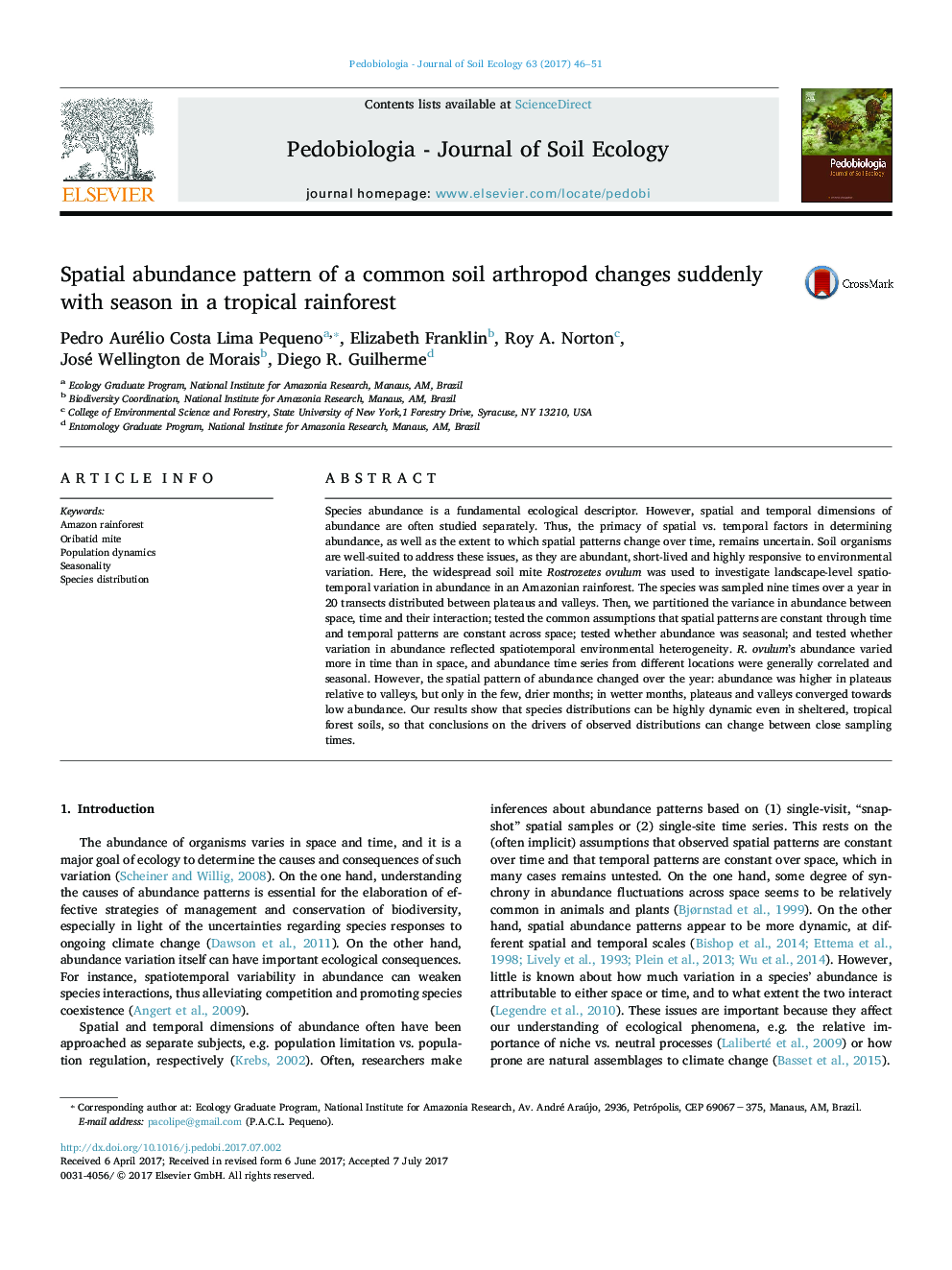| کد مقاله | کد نشریه | سال انتشار | مقاله انگلیسی | نسخه تمام متن |
|---|---|---|---|---|
| 5518776 | 1544019 | 2017 | 6 صفحه PDF | دانلود رایگان |
- Abundance of the soil mite Rostrozetes ovulum varied more in time than in space.
- Abundance fluctuations from different locations were synchronized.
- The spatial abundance pattern of R. ovulum changed drastically over the year.
- Abundance was shaped by an interaction between habitat and rainfall.
- Both space and time are needed for unbiased inferences on soil fauna abundance.
Species abundance is a fundamental ecological descriptor. However, spatial and temporal dimensions of abundance are often studied separately. Thus, the primacy of spatial vs. temporal factors in determining abundance, as well as the extent to which spatial patterns change over time, remains uncertain. Soil organisms are well-suited to address these issues, as they are abundant, short-lived and highly responsive to environmental variation. Here, the widespread soil mite Rostrozetes ovulum was used to investigate landscape-level spatiotemporal variation in abundance in an Amazonian rainforest. The species was sampled nine times over a year in 20 transects distributed between plateaus and valleys. Then, we partitioned the variance in abundance between space, time and their interaction; tested the common assumptions that spatial patterns are constant through time and temporal patterns are constant across space; tested whether abundance was seasonal; and tested whether variation in abundance reflected spatiotemporal environmental heterogeneity. R. ovulum's abundance varied more in time than in space, and abundance time series from different locations were generally correlated and seasonal. However, the spatial pattern of abundance changed over the year: abundance was higher in plateaus relative to valleys, but only in the few, drier months; in wetter months, plateaus and valleys converged towards low abundance. Our results show that species distributions can be highly dynamic even in sheltered, tropical forest soils, so that conclusions on the drivers of observed distributions can change between close sampling times.
Journal: Pedobiologia - Volume 63, July 2017, Pages 46-51
